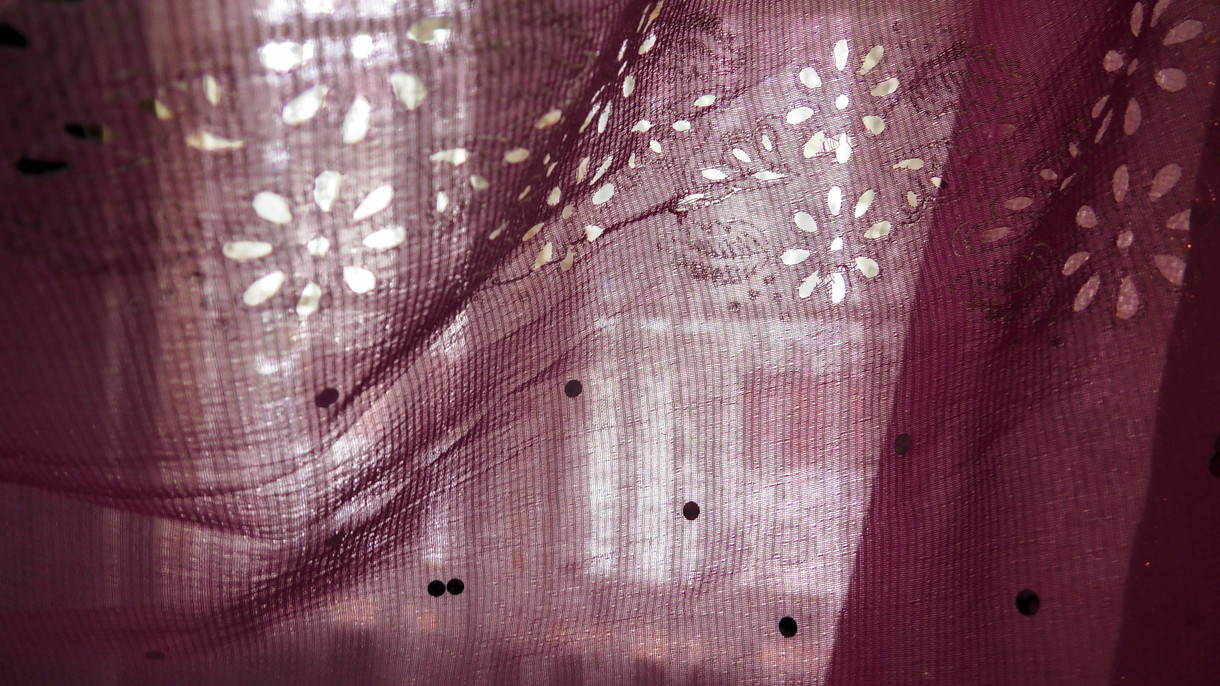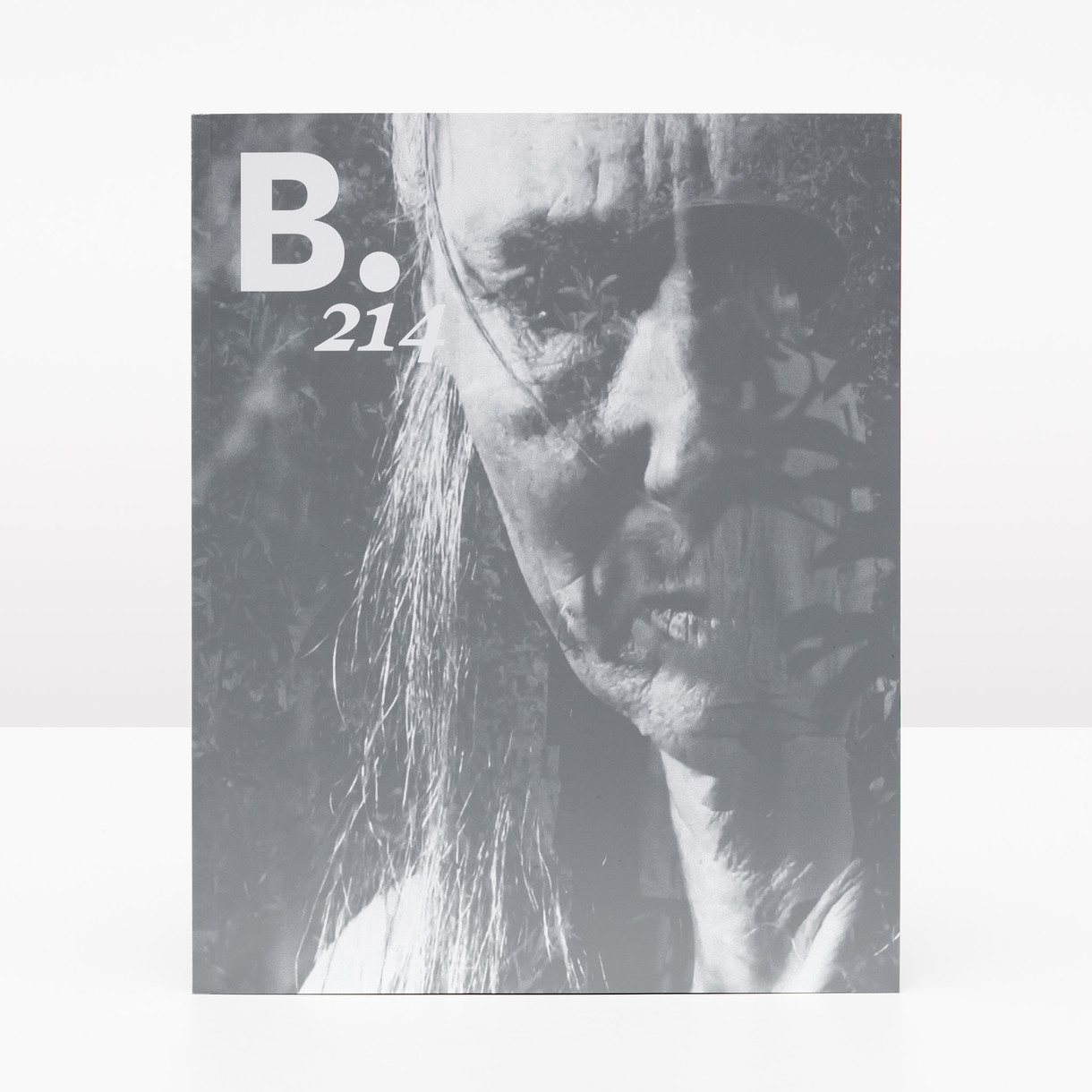Crosstalk
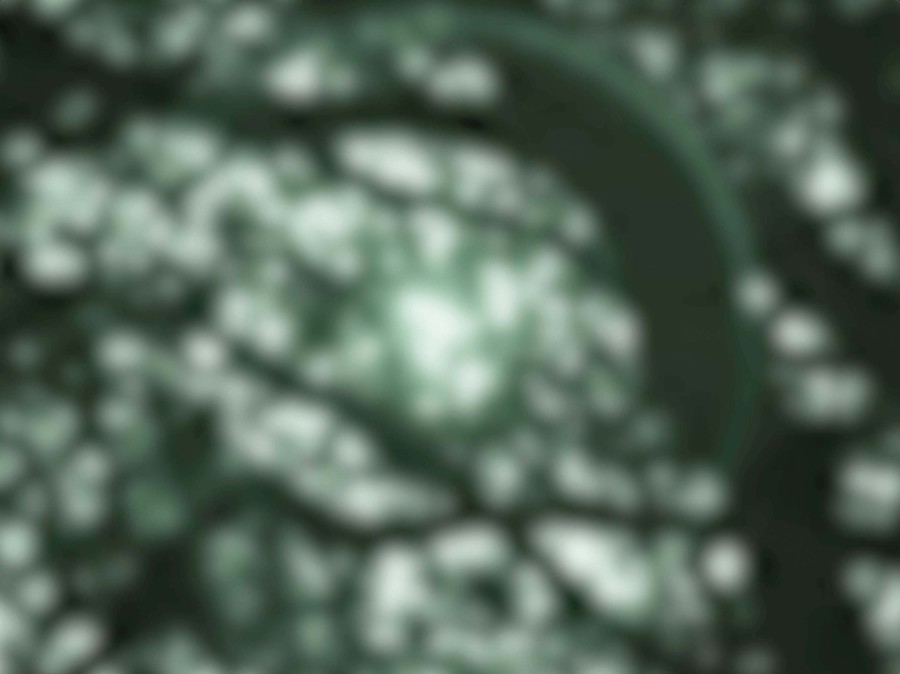
Aliyah Winter Rock, thorn, cryptogram (still) 2023. HD infrared video; duration 5 mins 8 secs. Courtesy of the artist
“Orpheus hesitated beside the black river. With so much to look forward to he looked back.” 1
I drive north through darkening skies. Dim headlights diffuse a blue pallor over the sinking plains and pooling wetlands that glow in dusk. The car bends the coast before turning inland to ascend the thicket of pine that cuts across the dark island. Forest hedging the summit accedes to widening de- pressions in the land. Its recesses withhold rubbled secrets of a past that appear and recede without warning. I am driving into October.
It had been some months since we had seen one another and on sight I was taken aback by the feeling – nameless, but containing at once the warmth of understanding and curious misrecognition. After several glasses of peach-coloured wine and careful talk that circled the room, we retired from the bar and the quiet, empty city for the return drive.
Our conversation unfolds before us like the terrain: shadowed, recursive and unsure of its firmament. The mood rises with the tilt of the hills and on descent returns to the murmuring dark pressing at the windows. Mostly we are silent. You adjust the radio dial as occasional passing headlights illuminate the mist encircling the highway; a strip of light cleaves your face. We pass highway signs counting the remaining kilometres, indicating a long emptiness ahead. Crackled voices warp and merge as one fuzzed timbre composed of many connections; with thumb and forefinger you circle a series of sibilant frequencies, conducting the currencies of an interstellar medium before settling on the hissing static, which you prefer to music and which finds a mutual foothold in me.
We arrive after midnight. Inside, you again search through waves of atmospheric traffic for a television signal, plugging and unplugging cords into networks and outlets. The snowy screen invokes retrospections of the ferocious electrical storms frequent in this remote region; diablo winds that cut power and connection to the world beyond its cradle. The pitch of the television is indistinguishable from the sound of heavy rain hailing down on concrete. We abandon the task and leave the screen on but muted, the picture displaying a buzzing plague of tiny, monochrome insects, or a swarm of black and white birds in unison, a ceaseless rushing wind.
Nobody wants to stare directly into love and, equally, no one can write about it well because that would require a distance love does not afford. At some point, scrolling YouTube, I come across a science channel where a bespectacled, suited man with a thick drawl describes indistinguishable electromagnetic fields interfering with what he characterises as the real signal, and the various waves of crosstalk corresponding in the atmosphere. He offers lightning storms as a causal example for the disturbance and radiation from the sun and various other electronic sources. Some interfering phenomena, he adds, contain the original explosion of the universe, routing across aeons from deep space to interface with the present moment. When troubleshooting, you’ll notice a glitch or hear a random noise if the wave is offset from the original, which corresponds with a sound or pixel. If you’re having issues, he continues, “remember – you’re getting a glimpse into lightning storms, the majesty of our sun and the beginning of the universe itself.”
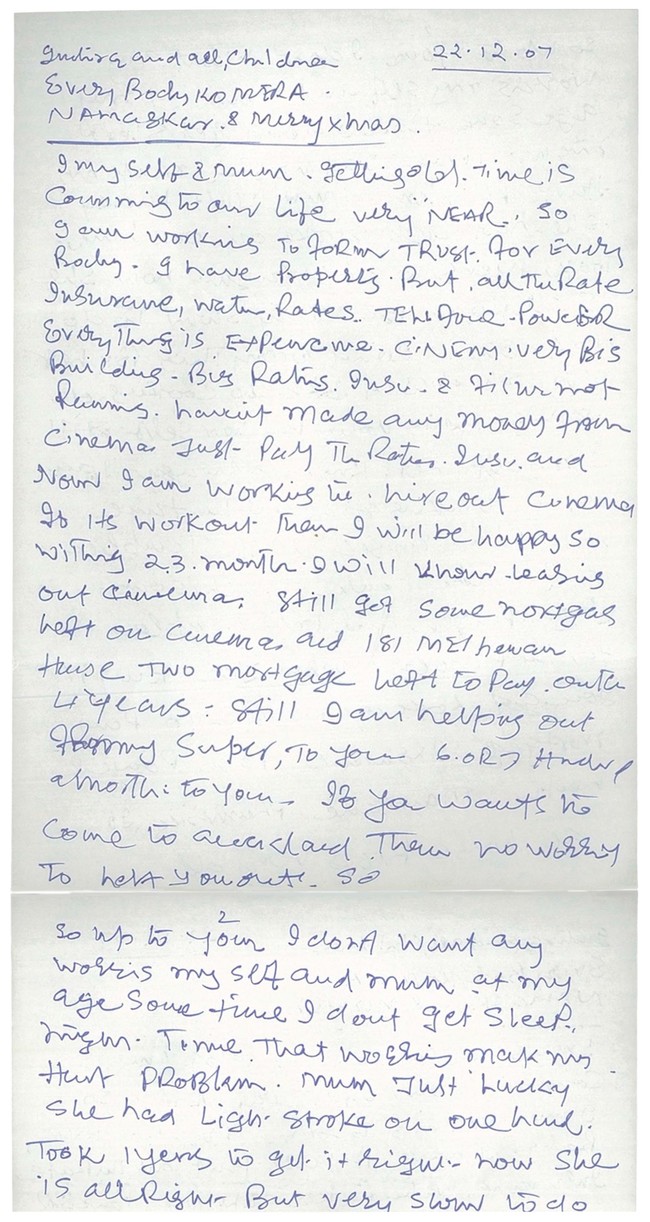
Ilish Thomas NAMASKAR & Merry Xmas 2022. HD video; duration 15 mins 55 secs. Courtesy of the artist
Birds (presiding between worlds and described by Jorie Graham as the “living icons of poetry, associated with divination and augury”2), the watching moon, bridges, screens, fog, powerlines, shrouding the mirror, the blue city with its sky- scrapers alight, looping night walks, tropical storms rolling over sagebrush, the currency of dreams, the green flash of WhatsApp lighting my phone; a phantom limb at cross-continental hours, the galaxy through a telescope; the elliptical galaxy of cyberspace, thickening snow rushing past the panes, aghast at the enormity of the inflamed orange sun descending behind the ocean, with you; on the street we held tightly to one another against the swarm, the distant planet below from an airplane window, a frozen lake on which skimmed stones lie, distant thunder, the Morse code of love where we are anatomised into units, two dozen yellow roses delivered: Yours, waiting on the shore, the note reads; swans doubling in dreams, returning to whether it felt the same. I sought to debug, buffeted by winds along the autumn pavement up Ninth Avenue, flanked by solemn grey angels, foehn winds in the canyon, the fused lights of traffic a curling golden snake, a line from an email that forms remnants of a dear friend no longer living, he is describing the sensation of reading a specific poem: “James’ son Franz has a line which best describes my experience of reading them”, he writes. “I just feel like a window with the light coming in.” In verse of his own, he continues: “That fist inside me: flowered.” Luminous nights in the car where we played music and said not a word. Silver ice on the dawn window, the empyrean parched salt flats of Death Valley, dried autumn persimmons sliced into half- moons; we form a dyad in an altered state and you press a firm orange disc of tight flesh into my teeth, a train sailing past in silver, the winding approach, hit play to again hear your voice, glimpses of a note from a song that once played right through, (the eye of my storm), metal weathervane spins high above rumpled orange leaves, thousands of messages that comprised a union reduced to and contained within a phone now obsolete, my teacher instructs: underlying all thought is a field of silence. I send you a smoke signal, the cemetery and its mausoleums, waking in fervid mornings to feel the shadow of a helicopter transverse the sun across my closed eyes, ravens on peeling eucalyptus trees, a kiss as a car crash occurred ahead of us, brass candlesticks, the plastic wrap in which your wooden gift arrived; bound in ribbon adorned with constructivist patterning, the yielding dawn desert, the jubilant dial-up of Skype, bright red borscht, running in the pouring rain to catch a cab to the restaurant (you were so cheerful), a low fan slicing through the thick swelter, night laps taken around the reservoir; you talked and I listened, the arcs traced in the city park, disinterested commercials on television, the boughs of a tree clawing the window, giving up on the connection, plastic airport carnations, dazzled on the narrow street, you took my hand –
Each motif emerges in my scraps of writing: notes in a diary, texts to self, impressions in a journal, records of facts all collapsing in ruination and resurrection. Reflecting on the disinterring nature of writing memoir and her own resistance to the act, Annie Ernaux writes, “deep down I remained steeped in the pleasure of unwrapping memory after memory. I refused the pain of form.”3 One writes into one’s past with its algorithmic bricolage of images and references as though description might reanimate it; that one might recover a lost object from which emerges a forgotten self. Within the tradition of the tragedy lies the notion that one’s origins are oracular; they beget one’s destiny and illuminate the map of our demise.
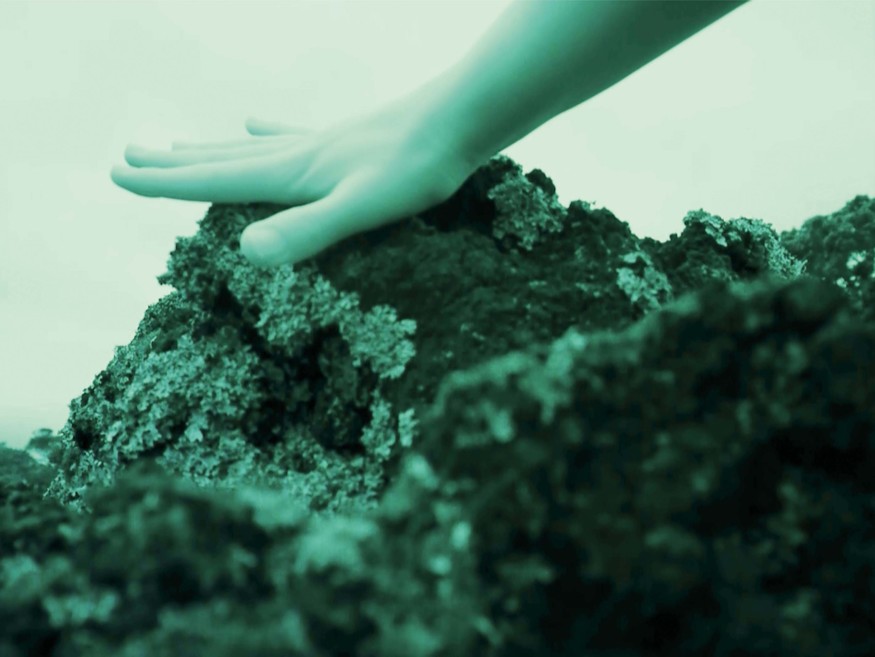
Aliyah Winter Rock, thorn, cryptogram (still) 2023. HD infrared video; duration 5 mins 8 secs. Courtesy of the artist
“ I know you feel like the lighthouse. And you are. But the lighthouse, it’s important to remember, isn’t a searchlight.”
Memory integration refers to the idea that memories of related impressions and experiences are held as reserves within the brain and selected by the mind as overlapping representations, bound to non-temporal and non-sequential constructs. They form networks that stretch across events to facilitate the extraction of discrete information. The failure to integrate a memory, I once read, results from an encoding failure; that is, information was not processed into memory because the memory was not sufficiently encoded in the first instance. This, I think, illustrates the untrammelled capriciousness of our connections and the volatility of the unconscious; itself, perhaps, a deific ledger. It can be impossible to understand why a particular memory or encounter seizes us so. It has something to do with self-recognition. Where historical remuneration insists upon exacting re- construction, memory resists. But some connections, their corporeal tenure notwithstanding, can fold in centuries within one lifetime.
There is a specific set of connected moments to which I return often. I am walking home from the newsroom where I work as dark falls. I remember our conversation about the terrorising rain and the fog rolling in. Then and there, during that time, every entity felt alive: the shifting hill- sides, the sky a thickened bruise above the terrible harbour mouth, the river that glowered and appeared to watch one’s movements. I recall the way the sky would gather its darkening weight into a wing and broaden its reach to advance across the town as the light turned under. At that time, all apparent phenomena appeared to speak to one another in an unfamiliar language. But every evening at nightfall the lighthouse beam concentrated its ray into a single shaft and began its slow search for life. It seemed less a warning and more a pursuit, though perhaps its design had escaped its portentous origins and rather contained both.
The lighthouse, salutary on the river’s edge, stands resolute amongst a pile of rocks. Atop its cupola turns an alloy weathervane that resembles both bird and arrow. Diamond- shaped lattice windows ring the lantern room, inside which a white lamp is mounted, and illumines outward. It is a light as brilliant as the blazing sun, and from its lens extends a long, fixed beacon that draws a slow arc, brushing rooftops, the emptied main street and the broadening river. On the walk home, preceding my field of vision, the searching beam broadcasts its distant gaze – a lonesome and silent mayday call that further impresses the sense of isolation. Arriving home, cutting across the grass, the beam against the black sky turns a strange, eerie blue; airborne dust and residue falls slowly through its shaft. I linger out on the lawn, following the path of its murky light shining high in the treetops.
Very few lighthouses remain in use. Those that endure are vanishing relics of the recent past; with the advance of electronic navigational systems they are considered obsolete. Equally, foghorns have modern counterparts though they occasionally blow their haunting paean across perilous harbours. Once, mariners on course to approach land were guided by fires lit on hilltops. Over time, signals were fashioned by oil lamps backed by mirrors; the Argand lamp, which burned whale, olive or rapeseed oil, was the standard for over a century before ceding to electric illumination.
“I know you feel like the lighthouse”, he once wrote in a card, now filed amongst reams of paper and sundries in a pale blue shoebox. “And you are. But the lighthouse, it’s important to remember, isn’t a searchlight. It’s not actually looking for anything, no matter how it appears from the beam. It is actually lighting the way.”






